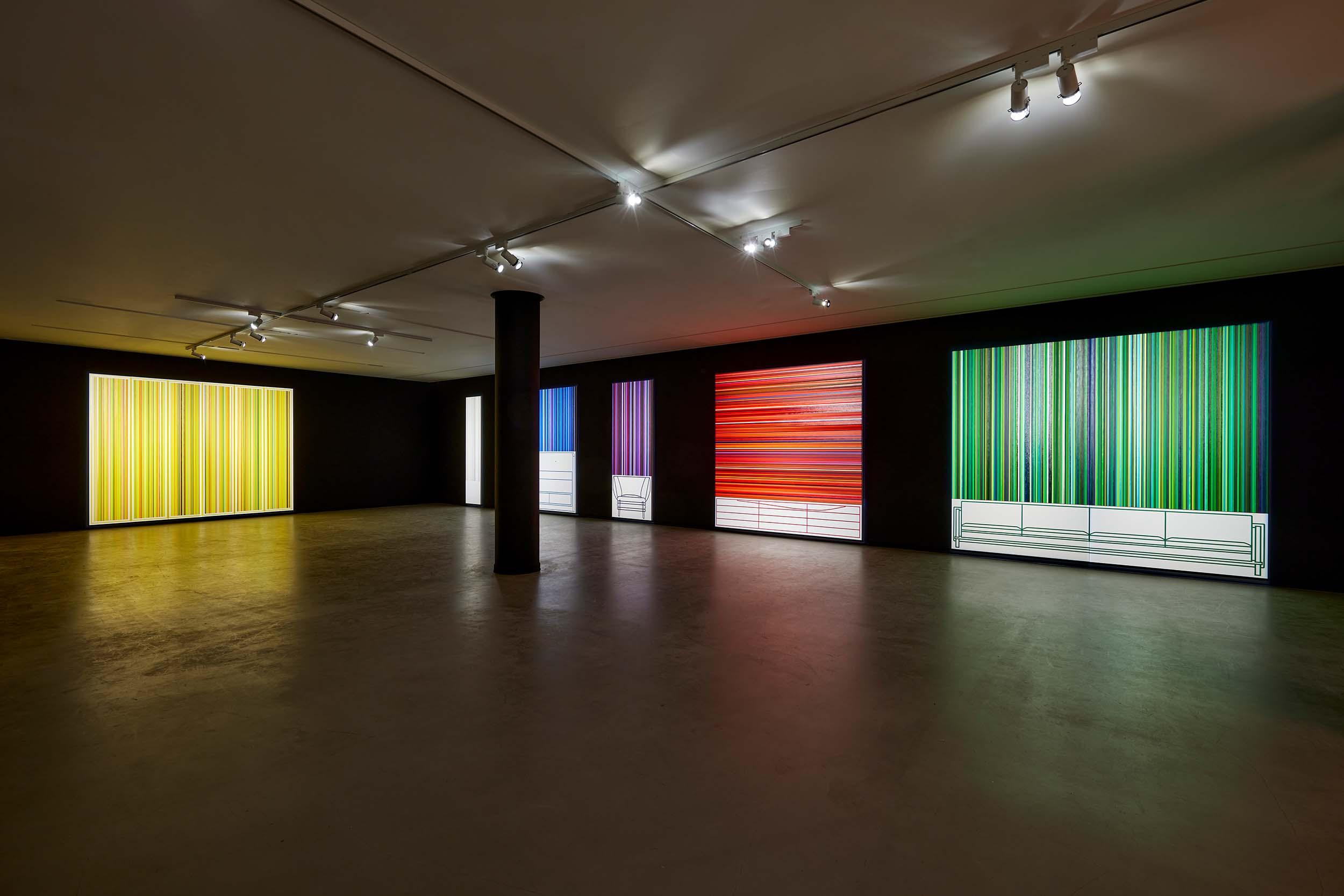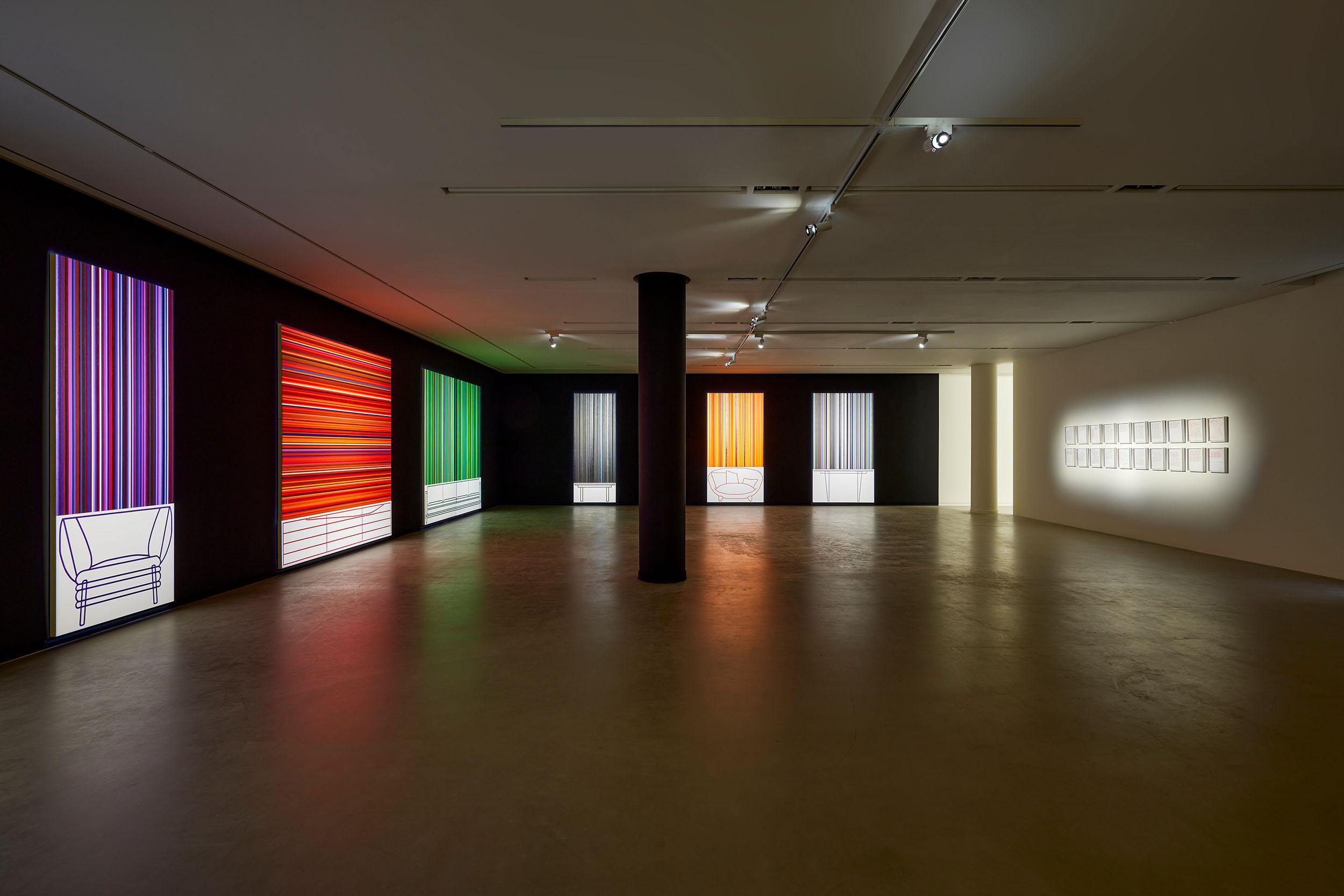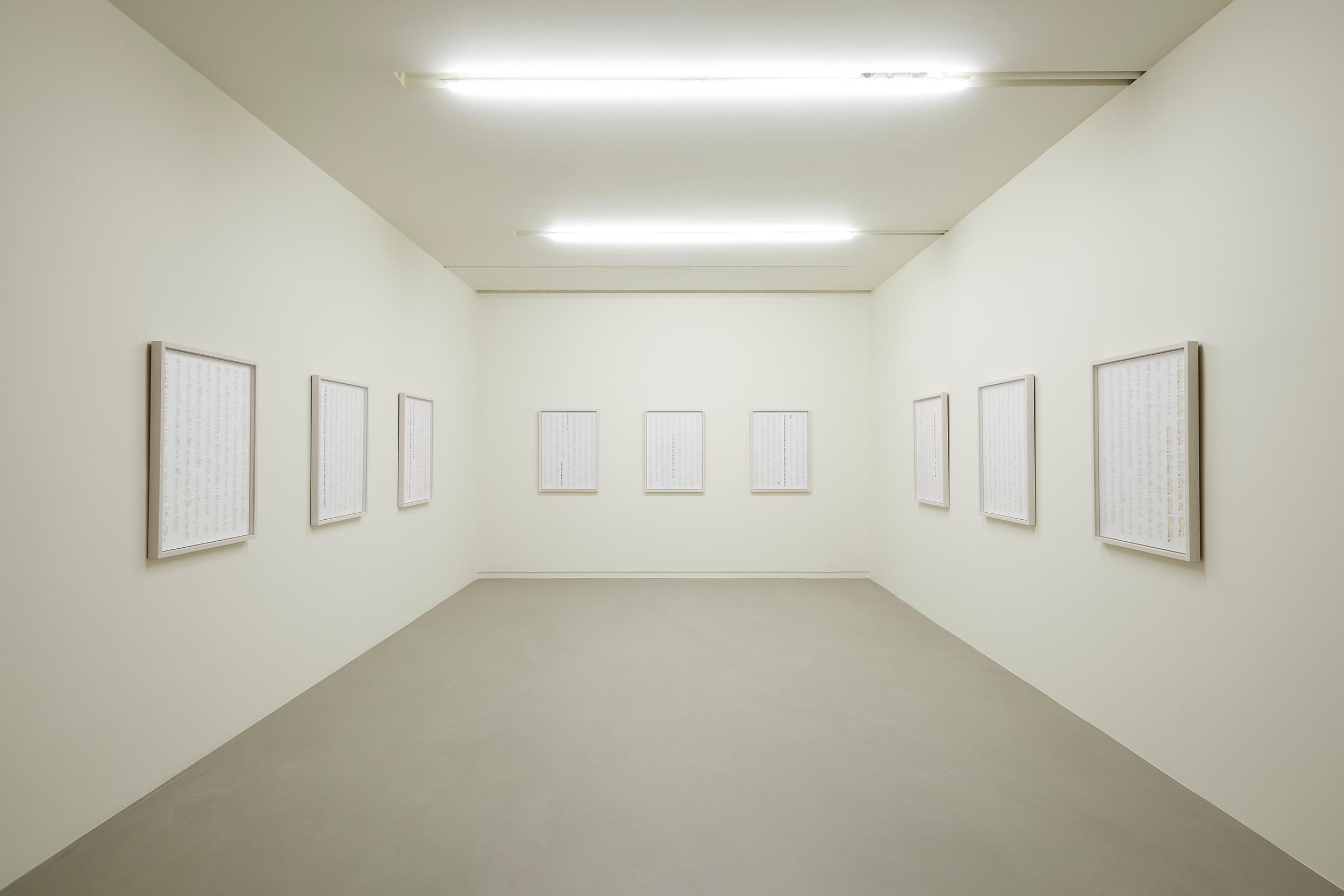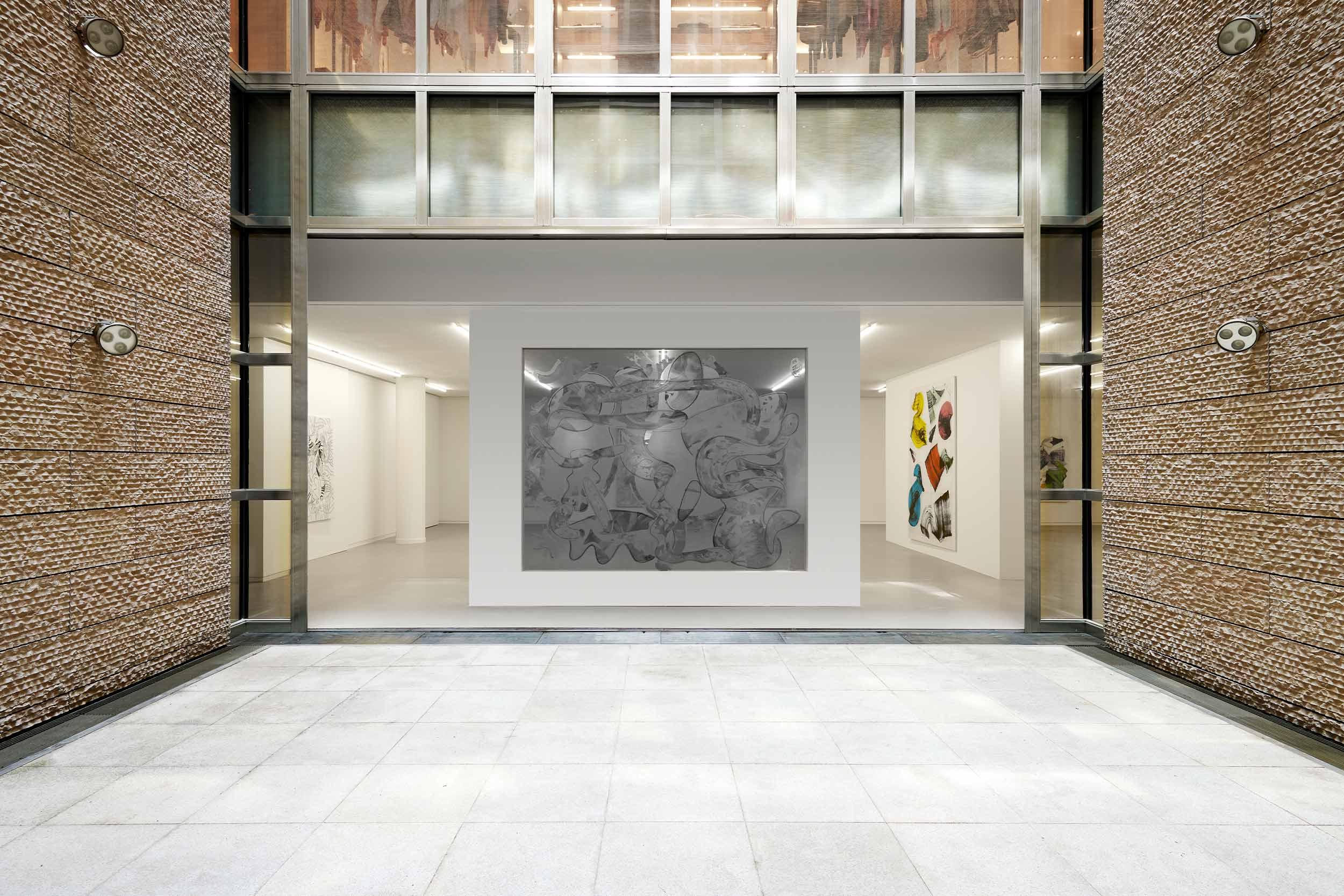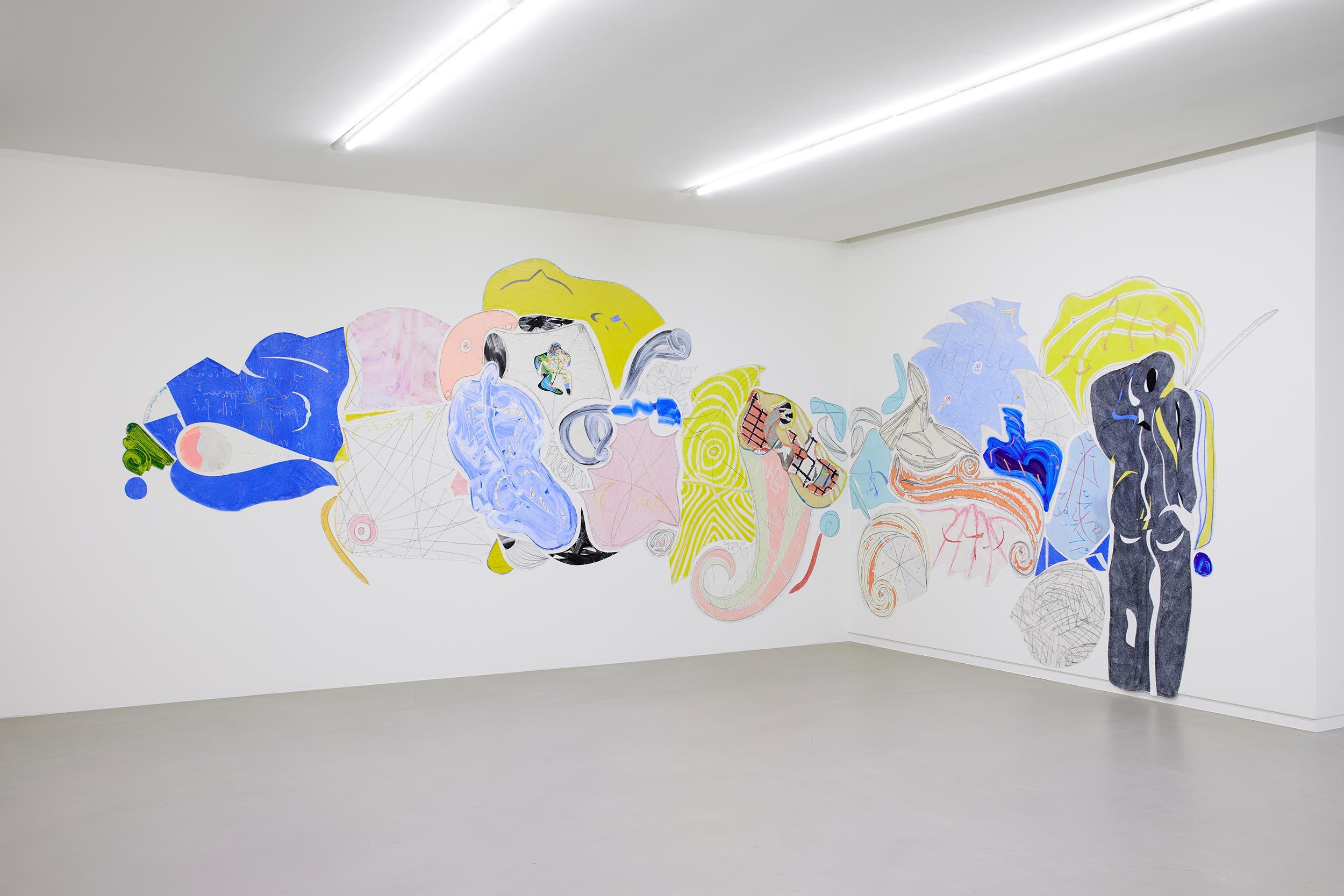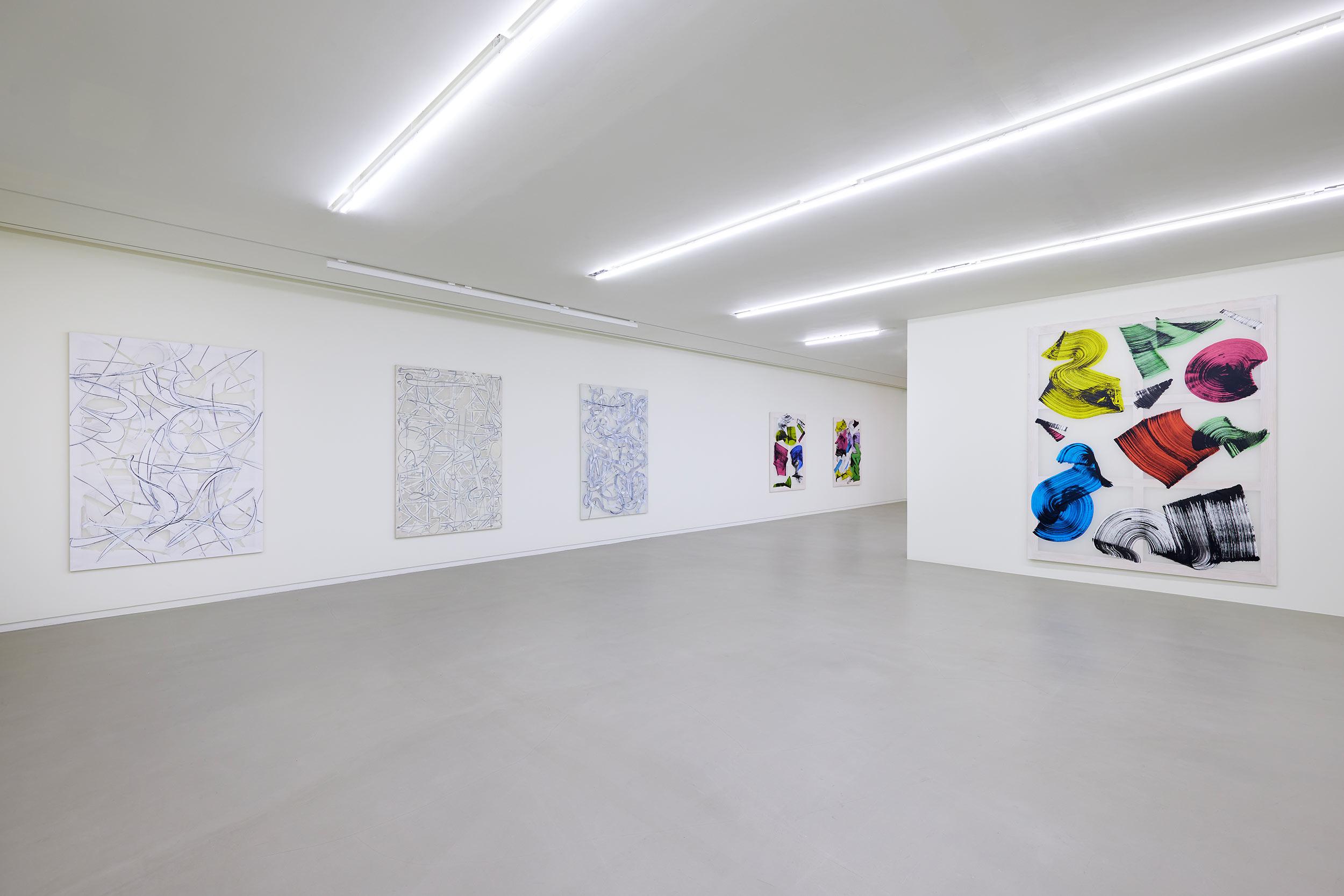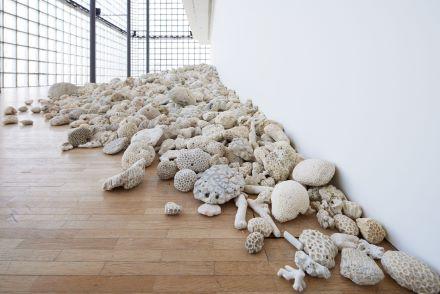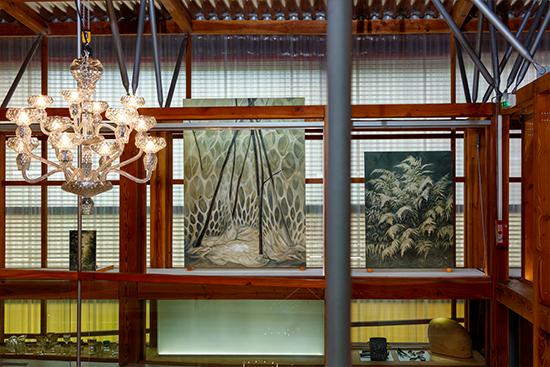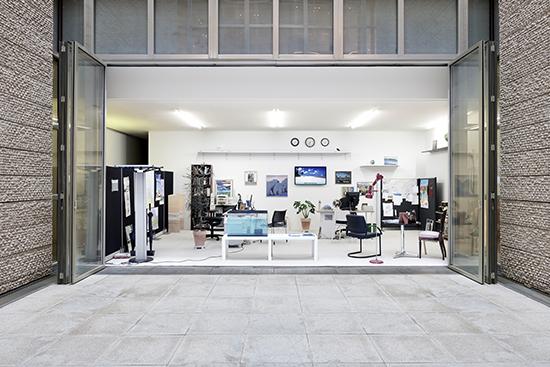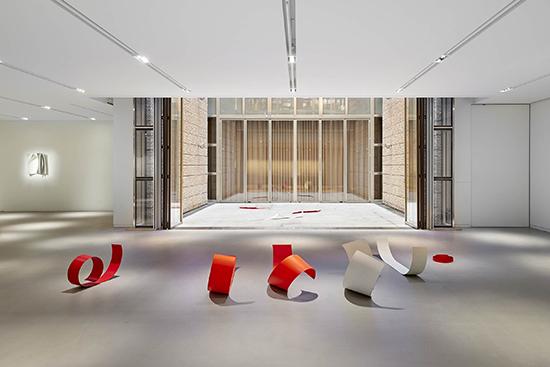The 2023 season opens with the first exhibition in Korea by French artist Christian Bonnefoi (b. 1948). Entitled “The Race of a Hare”, it brings together nineteen pieces from six emblematic series by the artist. Bonnefoi has worked for decades to renew the conceptual basis of painting itself, long defined by its two-dimensionality. In the mid-1970s, he took up collage, cutting up the motifs on his canvases and splicing them with other media to play with effects of transparency, thus liberating painting from its two dimensions by revealing the reverse side. In Seoul, the public will be able to discover pieces from the Dos (“backs”) series, inspired by reliefs by Matisse, whose vision was fundamental to Bonnefoi’s approach. Other pieces provide further insights into his singular practice, the theoretical basis of which is supported by his writings as art historian and author.
Working intensively with both colour and form since 1999, Korean artist MeeNa Park, b. 1973, is a tireless collector of commercially available paints. Over the years, she has transcended this material by drawing on art history, programming languages and underground culture to create paintings whose apparent simplicity belies their unique methodology. Her latest body of work, presented at the Atelier Hermès, is entitled Nine Colors & Nine Furniture, and lends its title to the exhibition. These recent paintings draw on a palette of colours whose names include one of the following terms: black, blue, green, grey, orange, red, violet, white or yellow. MeeNa Park has meticulously applied 1,134 different types of paint in 1-cm-wide strips, in combinations inspired by Korean domestic furniture. Though the resulting canvases are characterised by a pronounced minimalism, they nevertheless suggest a critical and systemic reading of industrially produced colours. In this way, MeeNa Park takes a distanced look at the history of painting and the role of colour in our everyday environment as it shaped by mass-produced consumer goods.
The year draws to a close with an exhibition by artist Young-jun Tak, who is exhibiting for the first time in his home country. Born in South Korea in 1989, he later moved to Berlin, Germany, and subsequently travelled across Europe, encountering a strong Christian tradition. As he visited religious heritage sites across the continent, he reflected on the possibilities of hybridity they might afford. With his perspective strongly influenced by the rejection of queer identities by conservative strains of Christianity in Korea, Young-jun Tak seeks to go beyond dogma and foreground non-heteronormative minorities. At the Atelier Hermès, he presents two films from an ongoing series that centres on contemporary dance, one of which – Love Your Clean Feet on Thursday – lends its title to the exhibition as a whole. In these two films, he juxtaposes choreographic situations that blend religious themes and queer identities to explore possibilities of coexistence between these two universes. The films are shown alongside three sculptural works that adopt a similarly hybrid approach. With this exhibition, Young-jun Tak – a citizen of the world – shares his singular point of view on the political, sociocultural and religious polarisation that he has observed in Korea and in Europe alike.
